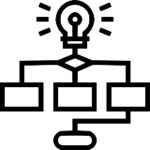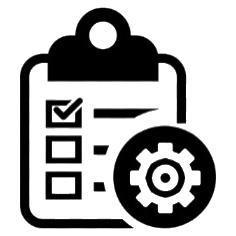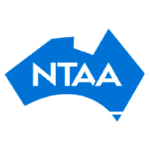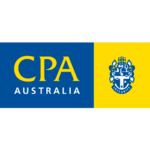

Understand the Full Process
What is the R&DTI regime
The Research and Development Tax Incentive (RDTI) encourages research and development (R&D) activities that generate knowledge for the benefit of the Australian economy.
The Department of Industry, Science, Energy and Resources (the department), on behalf of Innovation and Science Australia (ISA), administers the R&D Tax Incentive with the Australian Taxation Office (ATO).
The Australian RDTI is a self-assessed regime and has been the Government’s primary mechanism to support innovation in Australia since 1 July 2011. The RDTI provides significant benefits to both Australian and foreign companies undertaking R&D activities in Australia. Instead of a tax deduction at the prevailing corporate tax rate, one of two R&D tax offsets is available for eligible R&D expenditures over $20,000 incurred on eligible R&D activities that have been carried on during an income year. The RDTI is a targeted tax offset program. The R&D tax offset rates and expenditure caps have changed over time, and premium rates have been coupled to the prevailing corporate tax rates commencing or after 1 July 2021.
For companies with an aggregated turnover of $20 million or more, there are two-tiered premium rates that tie the rates of the non-refundable R&D tax offset to the incremental intensity of the R&D expenditure as a proportion of total expenditure for the year. The new rates will be the claimant’s company tax rate plus:
- 8.5 percentage points for R&D expenditure up to 2 per cent R&D intensity
- 16.5 percentage points for R&D expenditure above 2 per cent R&D intensity
|
FY Years |
Cash Refund Rate |
Offset Refund rate |
R&D Expenditure |
Base Rate |
|
FY17 to FY21 |
43.50% |
38.50% |
$100m |
30% / 27.5% / 26% |
|
FY 22 onwards |
Base Rate + 18.5% |
Base Rate + 8.5% or 16.5% |
$150m |
30% / 25% |
The application for eligible activities should be registered within 10 months of financial year end. Upon receipt of the application the department provide a Registration Number in due course. This registration number is then referenced as part of the claim within the company tax return lodged with the ATO.
Which type of entity structure qualifies as an eligible R&D entity?
Under the regime companies are the only entities that are an eligible R&D entity. However, companies acting in the capacity of a trustee of any entity (other than a public trading trust) and corporate limited partnerships or exempt entities are not an eligible R&D entity. The company should be an Australian incorporated resident or incorporated overseas but must have a significant economic connection. This includes companies incorporated in jurisdictions where a double tax agreement exists where it conducts business via a permanent establishment (PE). In the case of consolidated tax groups or Multiple entity consolidated groups the head company is entitled to lodge a claim. Only the company conducting the R&D (R&DCo) is entitled to eligible to claim.
Refundable vs Offset
An eligible entity whose aggregated turnover is below $20m is eligible for the refundable R&D Tax offset. If the aggregated turnover exceeds the $20m threshold, then the company is entitled to a non-refundable R&D Tax Offset.
- R&DCo’s turnover for the income year
- the annual turnover of any entity connected with the R&DCo
- the annual turnover of any entity that is an affiliate of the R&DCo
Broadly, annual turnover is the total ordinary income of the R&DCo in the income year in the ordinary course of carrying on a business.
This includes income on a worldwide basis. If the R&DCo was not carrying on a business at any time during the income year, your annual turnover is nil. Intra-entity transactions need to be excluded from the calculations in order to avoid double counting.
What are Connected Entities
The R&DCo is considered to be connected with another entity if any of the following apply:
- it controls the other entity
- it can be controlled by the other entity
- it and the other entity are controlled by the same third entity.
What are Affiliated
An individual or company (other than a trust) is an affiliate if, in relation to the affairs of their business, they act, or could be reasonably expected to act, in either of the following ways:
- in accordance with direction or wish of the R&DCo
- in concert with the R&DCo
Affiliates can be Australian and foreign individuals and companies. An individual or company is not an affiliate merely because of the nature of the business relationship that exists.
What determines Control?
For control to exist the R&DCo or its affiliates, or together with its affiliates should have either:
- shares and other equity interests in the company that give at least 40% of the voting power in the company
- the right to receive at least 40% of any income or capital the company distributes.
You control a partnership if you, your affiliates, or you together with your affiliates have the right to 40% or more of the partnership’s net income or capital.
Is the activity eligible for R&D Deductions?
The R&D activity decision tree on the following page sets out the key legislative requirements for activities to be either eligible core or supporting R&D activities.
A core activity is an experiment or set of related experiments that use the scientific method or systematic approach to create new knowledge, where the outcome cannot be known or determined in advance. An activity stops being Core when it is no longer creating new knowledge.
Section 355-25(1) of the Income Tax Assessment Act 1997, the law that applies to the program, states:
Core R&D activities are experimental activities:
- whose outcome cannot be know or determined in advance on the basis of current knowledge, information or experience, but can only be determined by applying a systematic progression of work that:
- is based on the principles of established science; and
- proceeds from hypothesis to experiment, observation and evaluation, and leads to logical conclusions; and
- that are conducted for the purpose of generating new knowledge (including new knowledge in the form of new or improved materials, products, devices, processes or services).
These activities can still be supporting R&D activities if they are undertaken for the ‘dominant purpose’ of supporting core R&D activities. This dominant purpose test also needs to be satisfied where a supporting activity produces goods or services or is directly related to such production.
What expenditures can be claimed?
In order to claim an R&D Offset, the total notional deductions should be at least $20,000. This threshold does not apply if expenditure was incurred to a Research Service Provider (RSP) which is registered under the Act and is not an associate of the R&DCo as well as monetary contribution under the Co-operative Research Centre (CRC) program. Eligible expenditure may be for
- expenditure incurred on R&D activities, including expenditure on overseas activities covered by an advance finding from Innovation Australia, amounts paid to associates and expenditure to an RSP
- the decline in value of assets used for conducting R&D activities (including R&D partnership assets). Currently until FY2023 assets purchased during the financial year can be fully expensed under Temporary full expensing to maximise the claim. There is an option to opt out of the temporary full expensing if the R&DCo chooses to.
- balancing adjustments for assets used only for conducting R&D activities (including R&D partnership assets)
- expenditure in relation to goods and materials transformed or processed during R&D activities to produce marketable products (feedstock expenditure)
- monetary contributions under the CRC program.
In broad terms, associates are those entities that, by reason of family or business connections, might appropriately be regarded as being associates of a particular entity.
Section 318 of the Income Tax Assessment Act 1936 lists this in more detail but some examples of an associate of a company, other than a company in the capacity of trustee, include:
- a partner of the company or a partnership in which the company is a partner
- a trustee of a trust estate under which the company or associate benefits
- another entity (including a natural person) that, acting alone or with another entity or entities, sufficiently influences the company
- an entity (including a natural person) that, either alone or together with associates, holds a majority voting interest in the company
- a second company that is sufficiently influenced by the company or the company’s associate
- a second company in which a majority voting interest is held by the company or the company’s associate.
Ineligible expenditure
The following are not deductible for the purposes of R&D
- Interest expenditure (within the meaning of interest in the withholding tax rules)
- expenditure that is not at risk
- core technology expenditure
- expenditure included in the cost of a depreciating asset (decline in value notional deductions may apply however)
- expenditure incurred to acquire or construct a building (or part of a building or an extension, alteration or improvement to a building).
Generally all expenditure on R&D Activities is claimable in the income year it is incurred. There are however certain exceptions to note
- any amount of expenditure incurred but not paid to an associate
- the prepayment rules apply in relation to expenditure for services to be provided over a period.
- Eligible expenditure on R&D activities must be claimed under the R&D tax incentive. If they are not claimed under the R&D tax incentive, it cannot be claimed elsewhere in your tax return. This is different to the former R&D tax concession, where you could choose to claim an amount under another deduction provision.
Other criteria to note
- Only the R&DCo can make claims on the activities they undertook (known as the on own behalf rule)
- Only expenditures that are at risk can be notionally deducted (known as the expenditure at-risk rule)
- Clawbacks will apply where government grants have funded any part of claimed R&D activities
- Feedstock adjustments will claw back some of the net tax benefit where the R&D activities produce tangible goods of value that are sold or used in the business
- Any group mark-up amounts should be reviewed before including in eligible R&D expenditure
- Expenditures in excess of market value are reduced if transactions are not at arm’s length.
- The reduction in company income tax payable resulting from claiming R&D tax offsets in an income year will naturally reduce the franking credits available. In addition, the receipt of a R&D tax offset refund is defined to be a refund of income tax and will give rise to deferred franking debits which will reduce future franking credits that would otherwise arise on the payment of income tax.
- Expenses related to overseas activities are only claimable via an overseas Finding. Any overseas expenses (such as travel etc.) is eligible provided the amount is nominal.
- Documentation and substantiation for all the activities, including experiment results and analysis need to retain following good governance procedures. This also includes all searches, reference materials that relate to supporting activities. Such evidence enables the ability to prove that these activities were conducted in order to satisfy any legislative requirements if such request are received.
Research & Development

Eligibility Matrix
The eligibility matrix shows the requirements to meet to be able to receive a R&D Tax Incentive.

Self Assessment Tool
Find out if your are eligible for R&D tax incentives today with our Self Assessment tool below.

Understanding the Full Process
Find out more about the eligibility and tax incentive process and what is required.

Speak to Our R&D Specialist
Contact one of our R&D specialists to find out what tax incentives and eligibility requirements.







